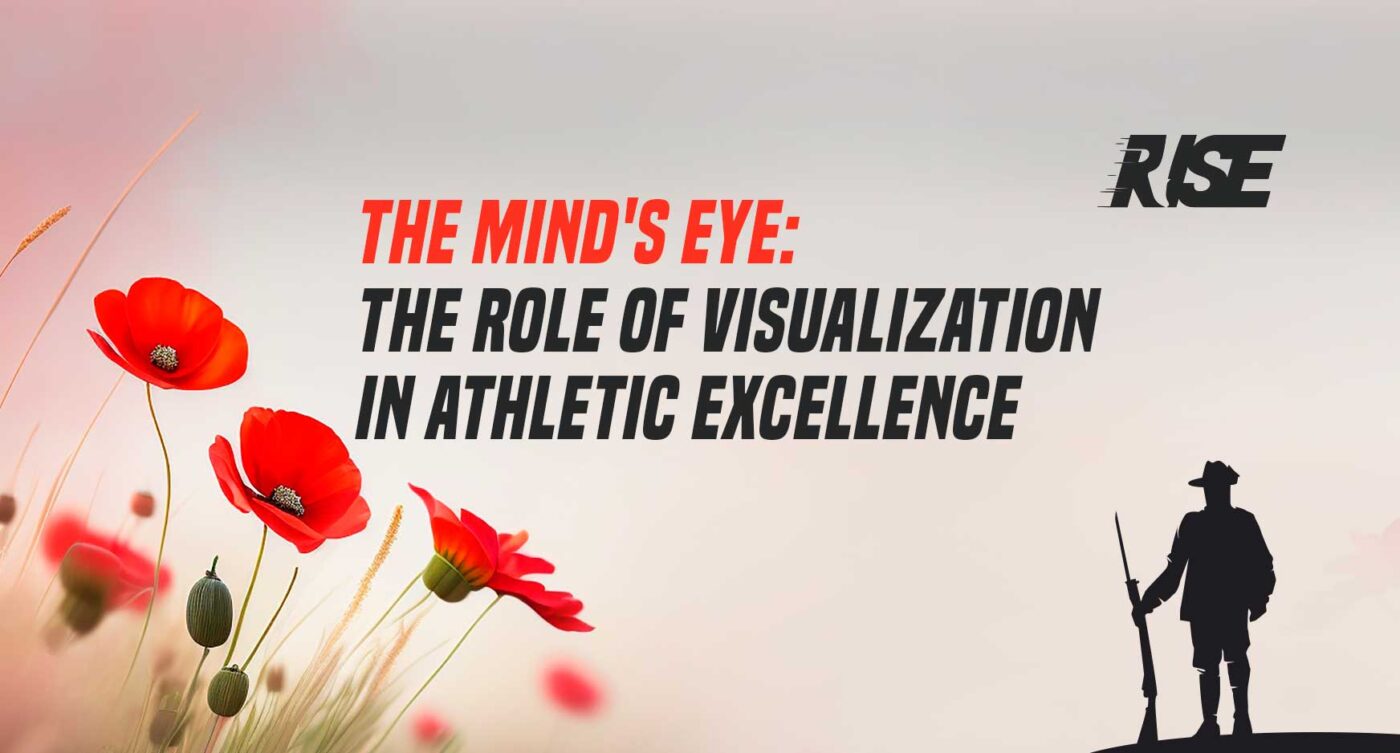The beauty of competition is the unpredictability. Coming from Australia, we love the underdog story. The David vs Goliath chronicle. The rags to riches narrative. The truth of the matter is, that anyone who puts time into their preparation for competition will usually run the mini-movie of how they perform in their head. Whether it is a deliberate practice or not, this is what is typically known as visualization or mental imagery.
For many athletes, mental imagery is a powerful mental tool that is often under-utilized and under-practiced in the lead-up to events and fulfilling life-long goals. It is a mental tool that has proven to fast-track an athlete’s progress, help athletes perform to the upper echelon of their potential, and move them closer toward the short-term and long-term goals they set out to achieve. The fact is, Focus (which is where we direct our thoughts) is a skill that can be developed in the same way that a muscle is built or skill is attained: Through practice and consistent repetitive action.
It is no secret, that for an athlete to perform at their best, they need to be completely present – in the moment and concentrating on the task at hand. What separates the greatest athletes in the world from the rest of the competition is their ability to stay focused through all of the errors, mistakes, adversity, momentum swings, challenges, and failures that can occur not only on the day of competition but along the path to elite and professional levels of sport.
The benefit of mental imagery is that it doesn’t only improve your focus when you need it most, but with time and consistent action, it can help shape your reality. Research shows the mind cannot distinguish the events occurring in the outside world from what we create in our minds. Everything is filtered through our own personal lens. How we comprehend certain situations and events can completely differ from the next person.
With around 11 million bits of data sent to the human brain for processing, through our sensory system – the conscious mind can only process about 50 bits per second. So, who decides what data gets in and what doesn’t? You do. By what you choose to focus on. In the same way, you filter life through a lens, you can filter mental images. Your focus creates your reality. Thus, making mental imagery an extremely powerful strategy to excel.
“The mind is a powerful tool; use it wisely to shape your destiny in the arena of sports.” – Pele
The great Brazilian Soccer Player Pele accredits a lot of his success to his pre-game mental rehearsal. Pele would lie down with a towel over his head an hour before a game and visualize his entire soccer career from when he was a child playing in the park to some of the best moments throughout his career.
U.S. Olympic Champion Michael Phelps used visualization from a young age. Every night before he went to sleep and every morning when he woke, he watched a “mental videotape” of his races. Not only would he visualize the perfect race but he would also visualize adversity and how he could get himself back on track if something went wrong. This gave him the confidence and strategy to prepare him for any race.
“I would visualize best and worst-case scenarios. Whether I get disqualified or my goggles fill up with water or I lose my goggles or I come in last, I’m ready for anything.” – Michael Phelps
In a research measuring the power of mental rehearsal, Dr Michael Blaslotto from the university of Chicago conducted a study by asking a group of randomly selected students to take a series of basketball free throws. With the percentages tallied, he then split the class into three groups.
The first group was told not to touch a basketball for 30 days.
The second group was told to practice shooting free throws for 30 minutes each day.
The third group was told to come to the gym each day, close their eyes, and spend 30 minutes visualizing making a free throw shot.
After 30 days, all students were asked to come back and shoot the same number of free throws that they had at the beginning.
The first group showed no improvement at all.
The second group showed a 24% improvement in made free throws.
The third group, who had only visualized and not physically practiced a free throw showed a 23% improvement rate.
The study conducted showed that the group who had only visualized had essentially the same improvement rate as those who had physically practiced 30 minutes a day for 30 days.
“The more vividly we can imagine ourselves performing at our best, the more instinctive our best performances will become.” – Dr. Bob Rotella
As you can see, the results speak for themselves. So, now that I’ve got your attention let’s make mental imagery a deliberate practice so you too can reap the many benefits. Without further adieu, here are the 6 strategic points of practicing mental imagery.
1) Prepare Your Mental Videotape:
Pull out a journal and make some notes of the mental videotape that you will visualize. What are the three desired outcomes? The process to reaching these outcomes and three adversity strategies you will use throughout your mental imagery.
2) Visualize Through Your Own Eyes.
Use all of your sensory systems from a first-person perspective. See it unfold the same way you would see it in real life. Our senses create our reality so utilize each of them in your visualization.
What are you seeing? (Make the picture big large and colourful)
What are you hearing? (Is the crowd roaring? chanting? or maybe you hear the applause of family, teammates, and coaches).
What are you feeling? (Does a wave of energy come over you as you hit the winning shot or maybe it’s the exhaustion relief of making it to the finish line).
What can you smell? Maybe it’s the popcorn of the people in the front row or the freshly cut grass of the golf course or football field)
What can you taste? (Are you pumping those electrolytes back into the system after a huge performance or maybe you’re tasting a little blood in your mouth after going toe to toe in the ring).
Whatever it is, detail your sensory system to make the visualization process even more real.
3) Visualize the Desired Outcome.
Take yourself to a place where you are less likely to be distracted. Close your eyes and Visualize the outcome that you want. Rehearse your performance in your head exactly how you want it to unfold.
As you strengthen your focus, the process of mental imagery will be something that you can utilize at any time anywhere. Like a mental video if the images become negative, stop, rewind, and restart the experience. See the performance how you want it to play out.
4) Visualize the Process of Performance:
Visualize the finer details. How will you control the controllables? How will you build your preparation leading up to the event and maximize your effort and attitude throughout the performance?
What are the moments leading up to the race, that great shot or the interception on the defensive end? The process creates outcomes. Attention to detail is everything!!
5) Visualize How You Will Overcome Adversity:
How will you react if you turn the ball over, get off to a poor start, miss an assignment, or the ref makes a horrible call? What happens in the moments after to get you ready for the next play? How does that play out?
The more you have a plan for how you can manage these situations the less you enter into a fear state.
6) Practice! Practice! Practice!
Mental rehearsal for athletes is a skill that becomes better with repetition. Like anything practice makes permanent, practice your visualization or imagery daily. The more you practice visualization the clearer the images become, the more focused you will be, and the more confident you are in the process of performance. Consistent practice is key!!
“I have visualized my imagination so clearly and so consistently that it has manifested itself into my reality.” – Connor McGregor
If you’re ready to take your game to the next level then mental imagery is definitely a great place to start. Consistent practice entails benefits. And in the same way, you create any habit, the first 10 days will be the hardest and most critical.
Whether mental imagery is something that is new to you or not – I would love to hear more about your experience with mental imagery and how you can make it work for you, or any challenges that come up in the process.
Otherwise, stay tuned for more Mental Edge Tips and Tricks as we continue to change the game and build athletes head first.
– 𝒞ℴ𝒶𝒸𝒽 𝒞𝒶𝓁.

